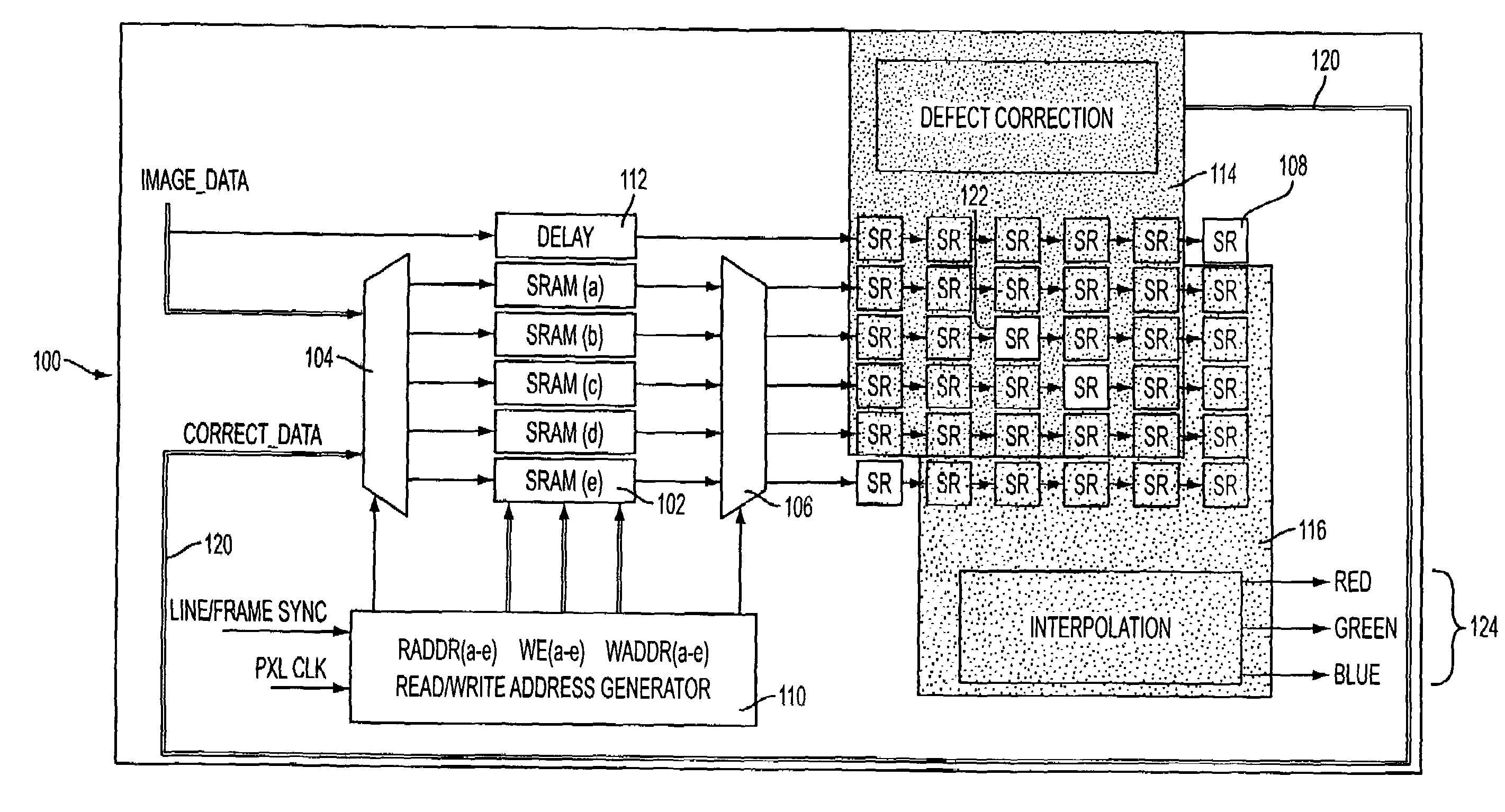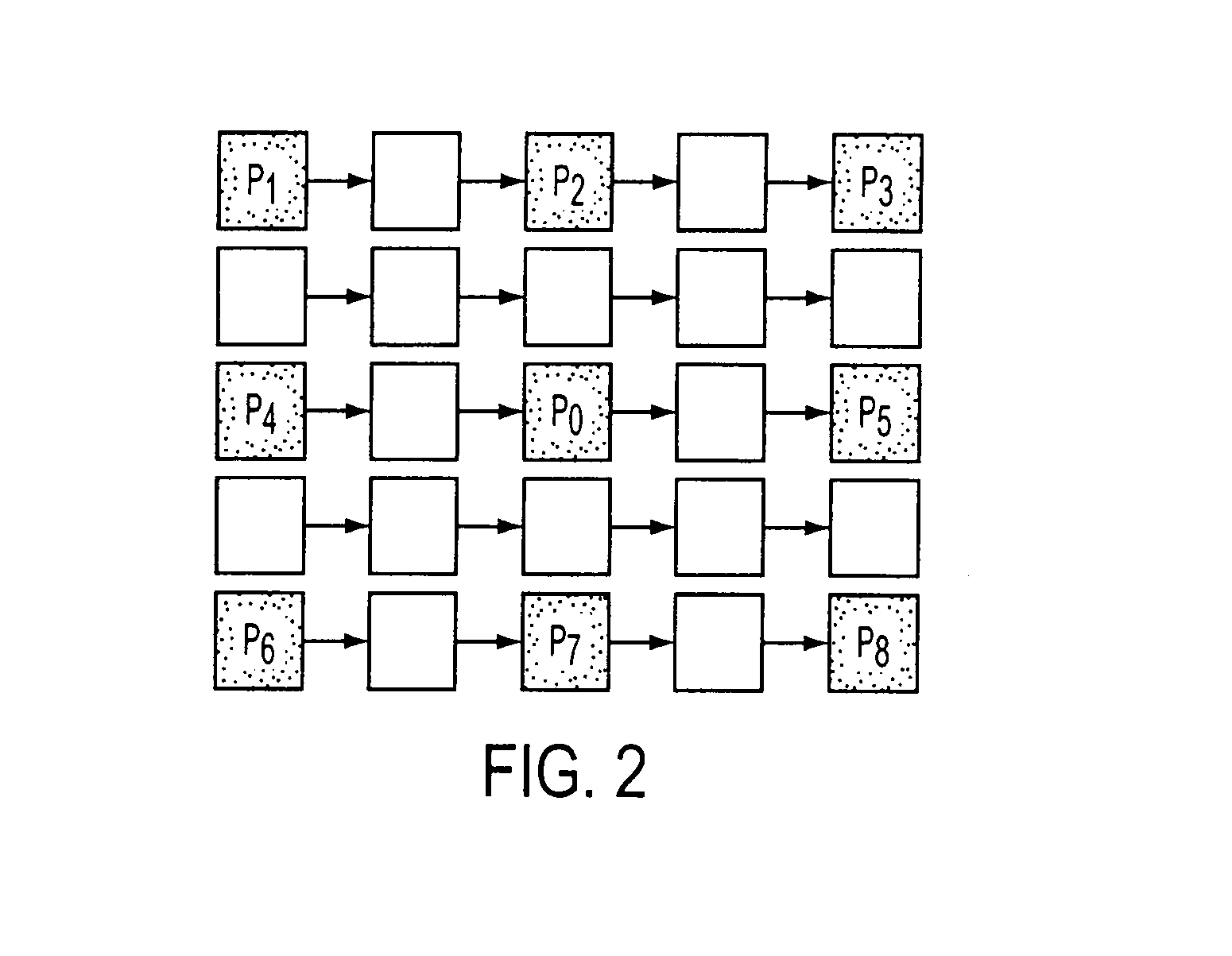Method and apparatus for real time identification and correction of pixel defects for image sensor arrays
a technology of image sensor array and real-time identification, applied in image enhancement, color signal processing circuit, instruments, etc., can solve the problems of limited number of defects that can be corrected, the effect of affecting a significant portion of the image is compounded, and the defect location is required. , to achieve the effect of reducing peak-to-peak noise variations in the imag
- Summary
- Abstract
- Description
- Claims
- Application Information
AI Technical Summary
Benefits of technology
Problems solved by technology
Method used
Image
Examples
Embodiment Construction
[0019]In the method aspect of the present invention, the signal value of each pixel in an image obtained by an image sensor is compared with the values for at least eight closest surrounding pixels having the same color filter located adjacent to or near the pixel being tested. An example of this method will be described for an image obtained by an image sensor having a Bayer mosaic filter array. As illustrated in FIG. 2, the signal value of the central pixel, P0, is compared with the signal values for each of the eight closest surrounding pixels of the same color. In this example, these eight closest surrounding pixels are located along the same row (P4, P5), column (P2, P7), and diagonally (P1, P3, P6, and P8) from the pixel being tested (P0), each spaced one pixel away from P0 in the relevant direction.
[0020]If the signal of P0 is larger than the respective signals of all eight surrounding pixels P1 through P8, then the signal value for P0 is substituted with the maximum signal v...
PUM
 Login to View More
Login to View More Abstract
Description
Claims
Application Information
 Login to View More
Login to View More - R&D
- Intellectual Property
- Life Sciences
- Materials
- Tech Scout
- Unparalleled Data Quality
- Higher Quality Content
- 60% Fewer Hallucinations
Browse by: Latest US Patents, China's latest patents, Technical Efficacy Thesaurus, Application Domain, Technology Topic, Popular Technical Reports.
© 2025 PatSnap. All rights reserved.Legal|Privacy policy|Modern Slavery Act Transparency Statement|Sitemap|About US| Contact US: help@patsnap.com



